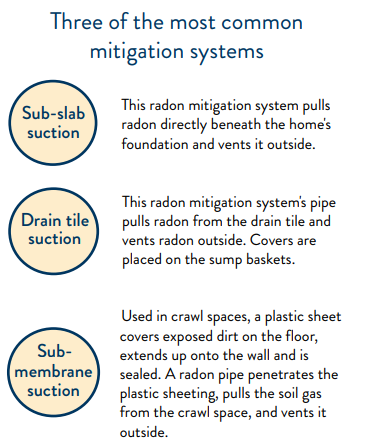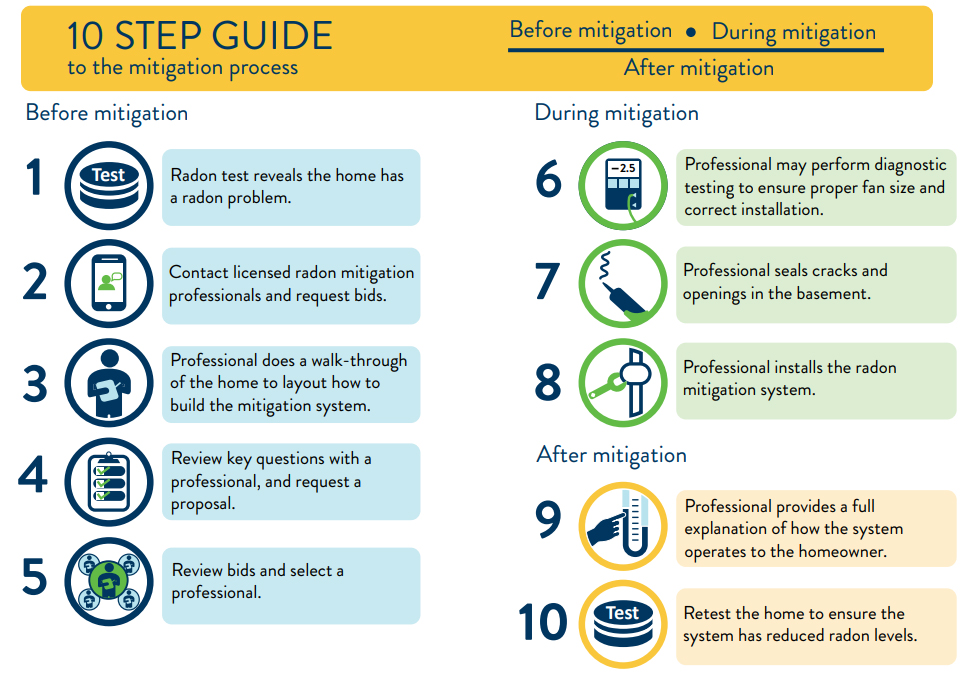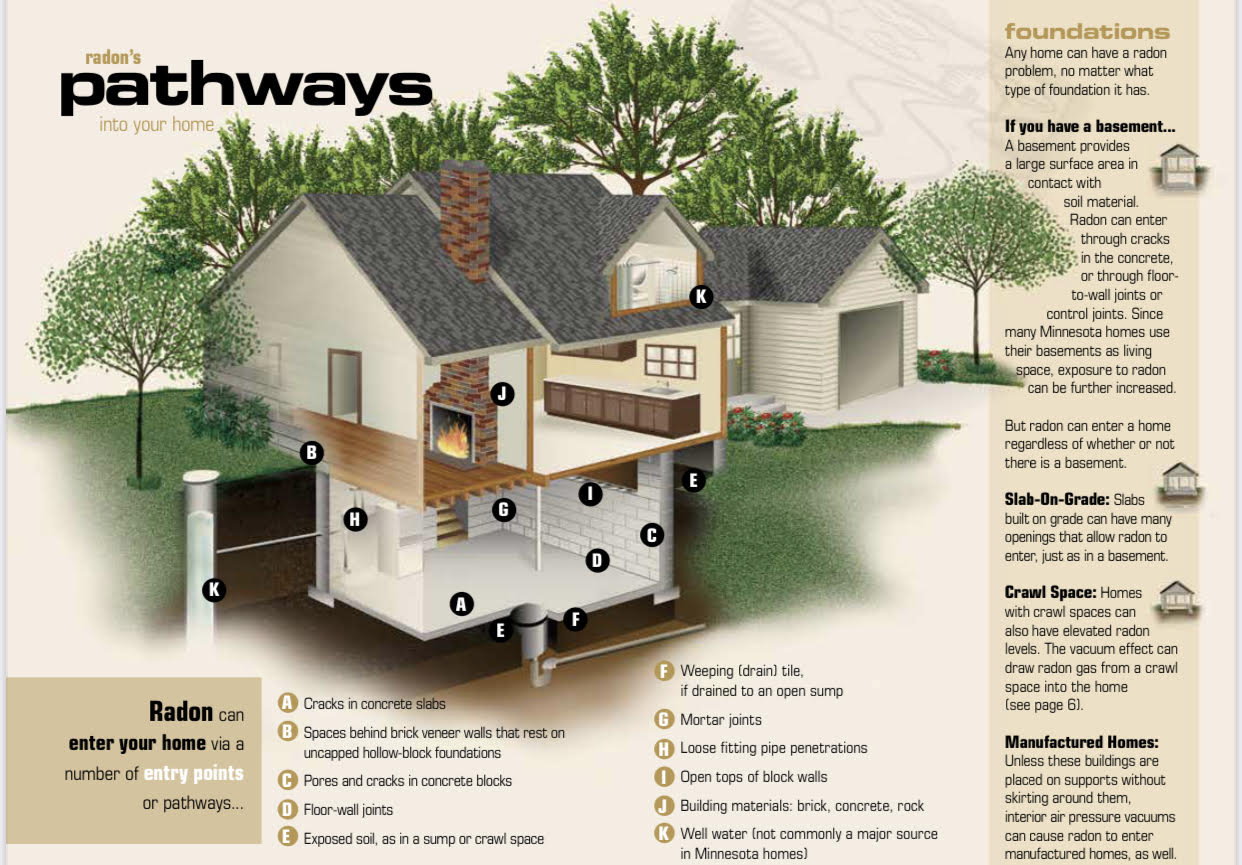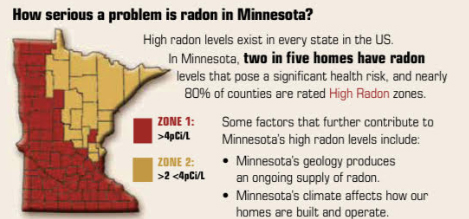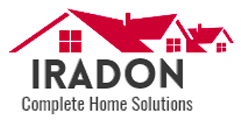Radon
Radon is a colorless, odorless radioactive gas that seeps up from the earth. When inhaled, it gives off radioactive particles that can damage the cells that line the lung. Long-term exposure to radon can lead to lung cancer. In fact, over 21,000 lung cancer deaths in the US each year are from radon, making it a serious health concern for all Minnesotans. This guide was created to explain the health risks of radon and why it is important for every home in Minnesota to be tested.
In this guide, you will learn:
- how you are exposed to radon
- how simple it is to test for radon, and
- what you should do if you have a radon problem, whether you live in an existing home, plan to build a new one, or are considering buying or selling a home.
Most of all, this guide is designed to help protect your biggest investment… your home. And to keep your greatest treasure, your family’s health… safe.
Where does radon gas come from?
The soil. Radon is produced from the natural decay of uranium
that is found in nearly all soils. Uranium breaks down to radium.
As radium disintegrates it turns into a radioactive gas…radon.
As a gas, radon moves up through the soil and into the air you breathe.
How dangerous is radon?
Radon is the number one cause of lung cancer in non-smokers and the second leading cause of lung cancer (after tobacco) in smokers. thankfully, this risk should be entirely preventable through awareness and testing.
Where is your greatest exposure to radon?
While radon is present everywhere, and there is no known, safe level, your greatest exposure is where it can concentrate – indoors, where you spend most of your time – at home. Your home can have radon whether it be old or new, well sealed, or drafty, and with or without a basement.
How serious a problem is radon in Minnesota?
High radon levels exist in every state in the US. In Minnesota, two in five homes have radon levels that pose a significant health risk, and nearly 80% of counties are rated High Radon zones.
Some factors that further contribute to Minnesota’s high radon levels include:
- Minnesota’s geology produces an ongoing supply of radon.
- Minnesota’s climate affects how our homes are built and operate.
How does radon enter a home?
Since radon is produced from soil, it is present nearly everywhere. Because soil is porous, radon gas is able to move up through the dirt and rocks and into the air we breathe. If allowed to accumulate, radon becomes a health concern.
Two components that affect how much radon will accumulate in a home are
pathways and air pressure. These components will differ from home to home.

Pathways
are routes the gas uses to enter your home and found anywhere there is an opening between the home and the soil.

Air Pressure
between your home’s interior and the exterior soil is what helps to draw radon gas into the home via the pathways.
Radon Testing
A radon test is the only way to find out how much radon is in your home. You can test your home yourself or hire a licensed professional. Most radon tests can be performed on your own, after reading the instructions. Hiring a radon measurement professional is recommended when an unbiased, third party is needed, such as in a real estate transaction. The result(s) from a properly performed test will help you decide if you need to reduce your home’s radon levels
Short-term (DIY) radon tests
A short-term test typically measures radon levels for 2 – 7 days and is a quick way to screen a home for radon.
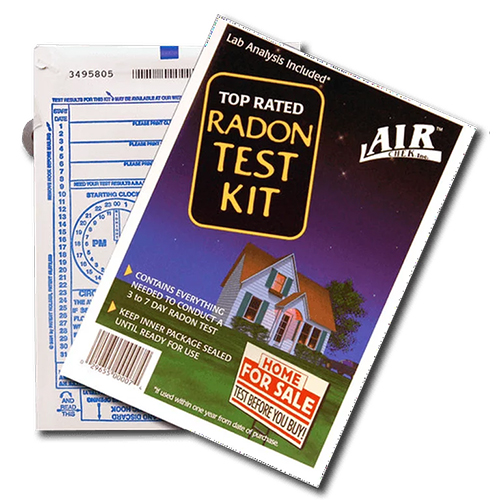
Short-term (professional) Continuous radon monitor (CRM)
This calibrated electronic monitor measures hourly levels and is conducted by a Licensed professional – These tests are the quickest way to getting your radon results. They are most often used in real estate transactions.
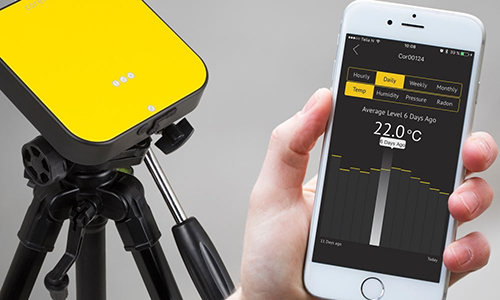
Long-term radon tests
A long-term test measures radon levels for a period greater than 90 days. They are the best way to estimate the annual average radon level in the home. Long-term testing should include part of the heating and non-heating seasons.
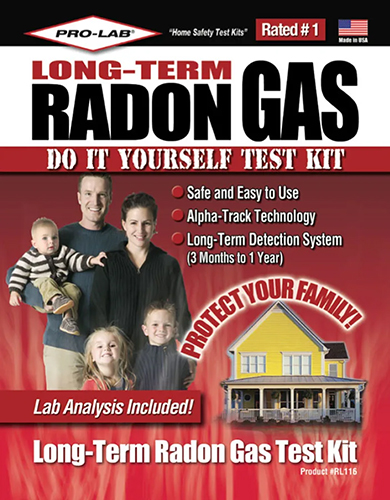
Radon Mitigation Systems
Radon mitigation is any process or system used to reduce radon concentrations in buildings. The goal of the radon mitigation system is to reduce the indoor radon level as low as reasonably achievable. All systems should reduce radon below the EPA action level of 4 pCi/L. A quality radon mitigation system may reduce year-round levels to below 2 pCi/L. A home’s foundation type helps determine the radon mitigation system that will work best.
A licensed radon professional should determine the type of mitigation system to install and may conduct some diagnostic testing to help guide where to place the mitigation system.
Radon mitigation systems use a fan to continuously pull air from the soil and vent it outdoors through a pipe that ends above the edge of the roof. The pipe can either run inside or outside the home and vents outside, away from windows and openings. In addition, cracks and openings in the foundation are sealed. Sealing limits the flow of radon into the home and makes the radon mitigation system more efficient
